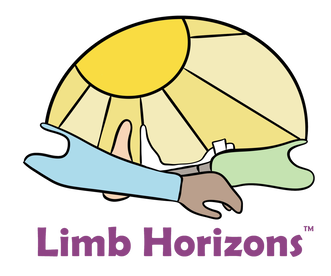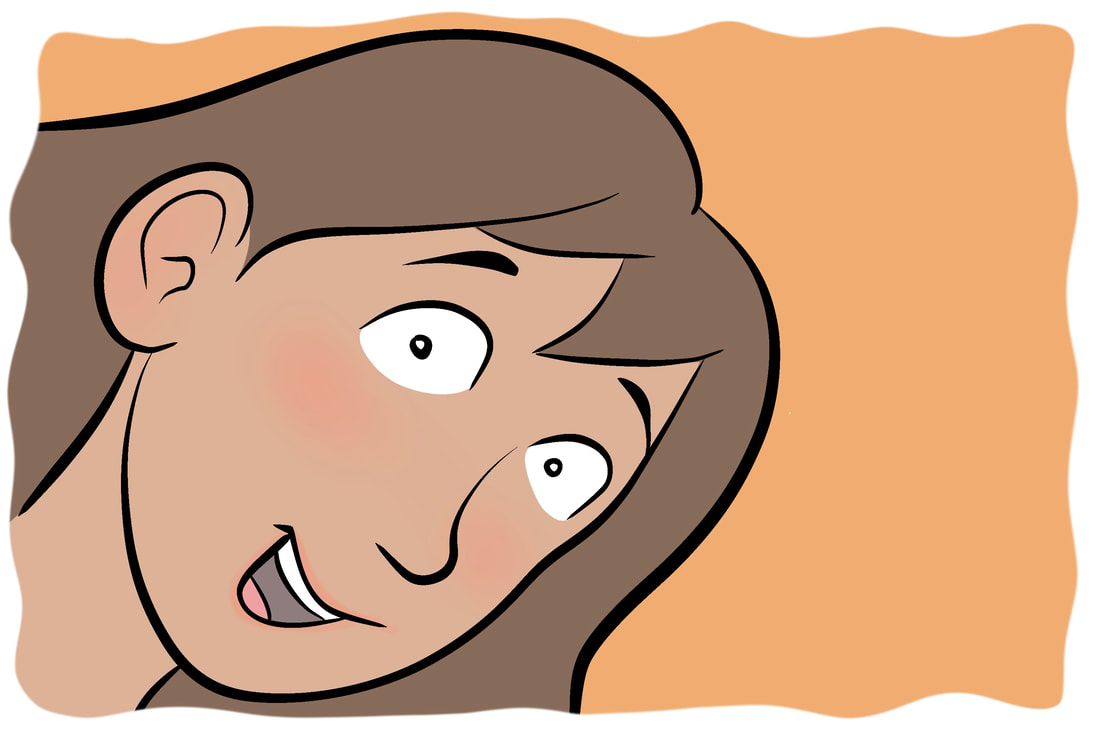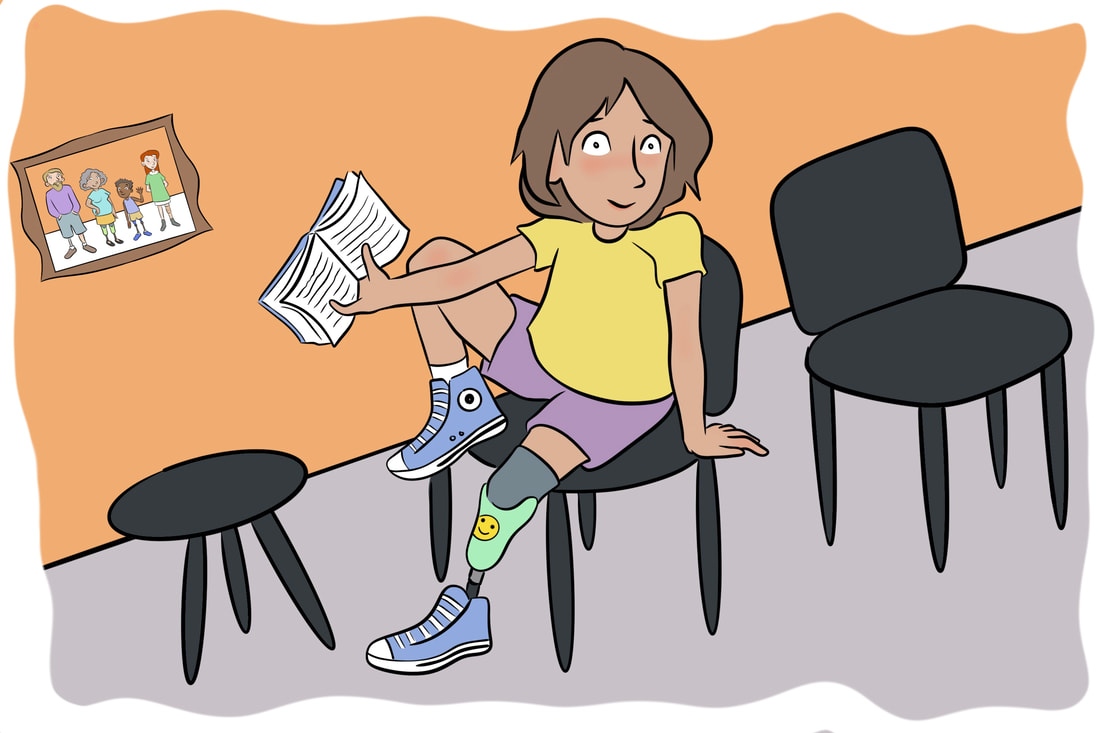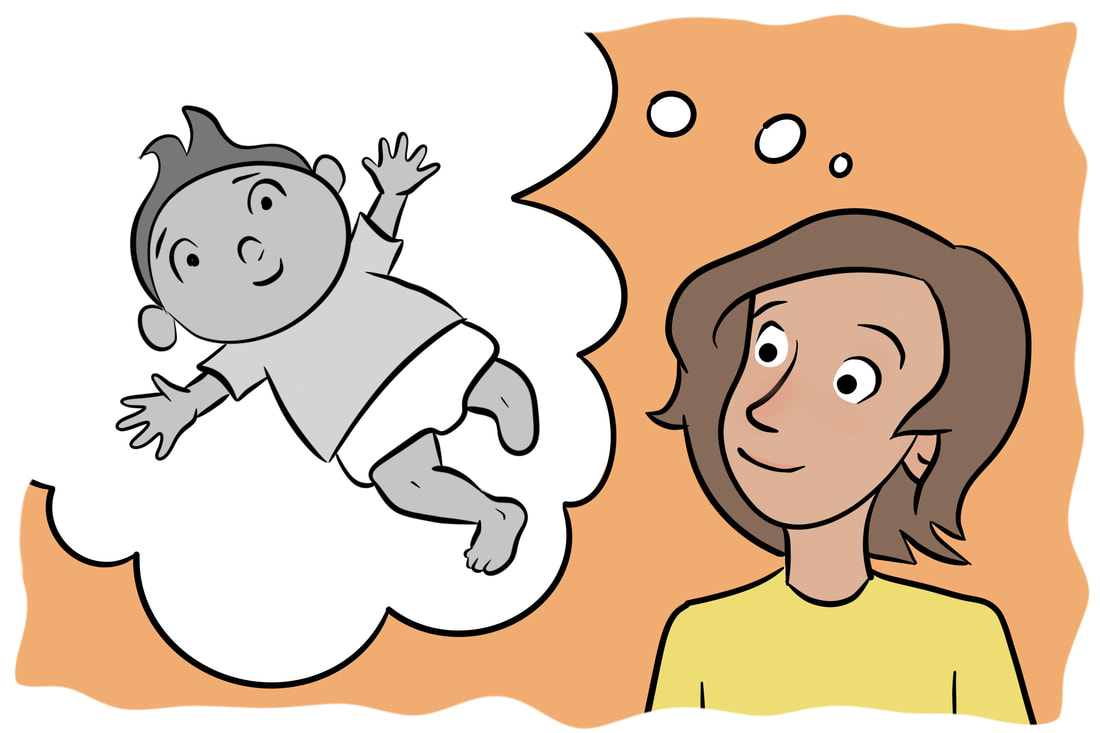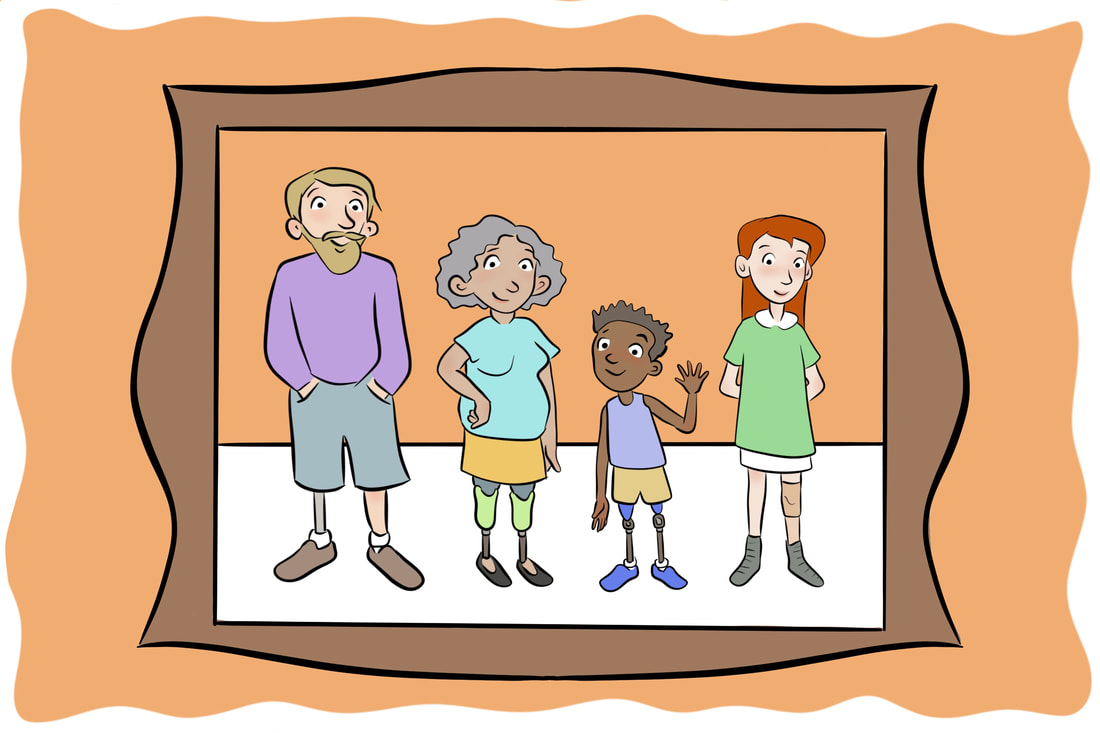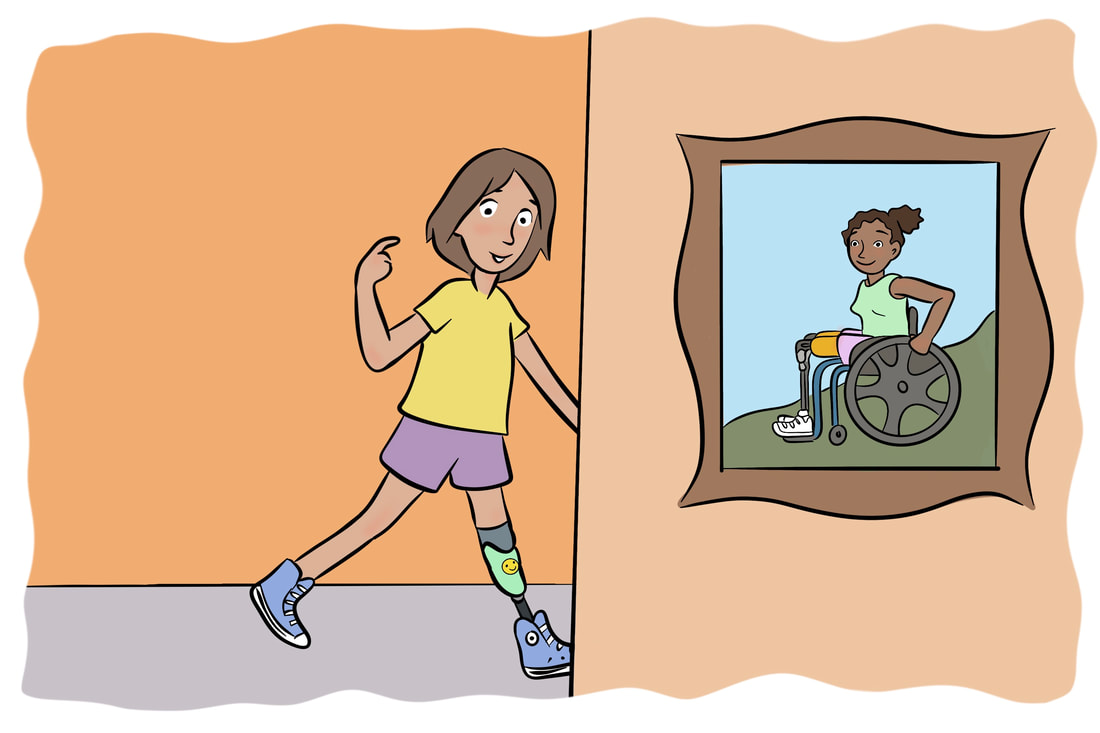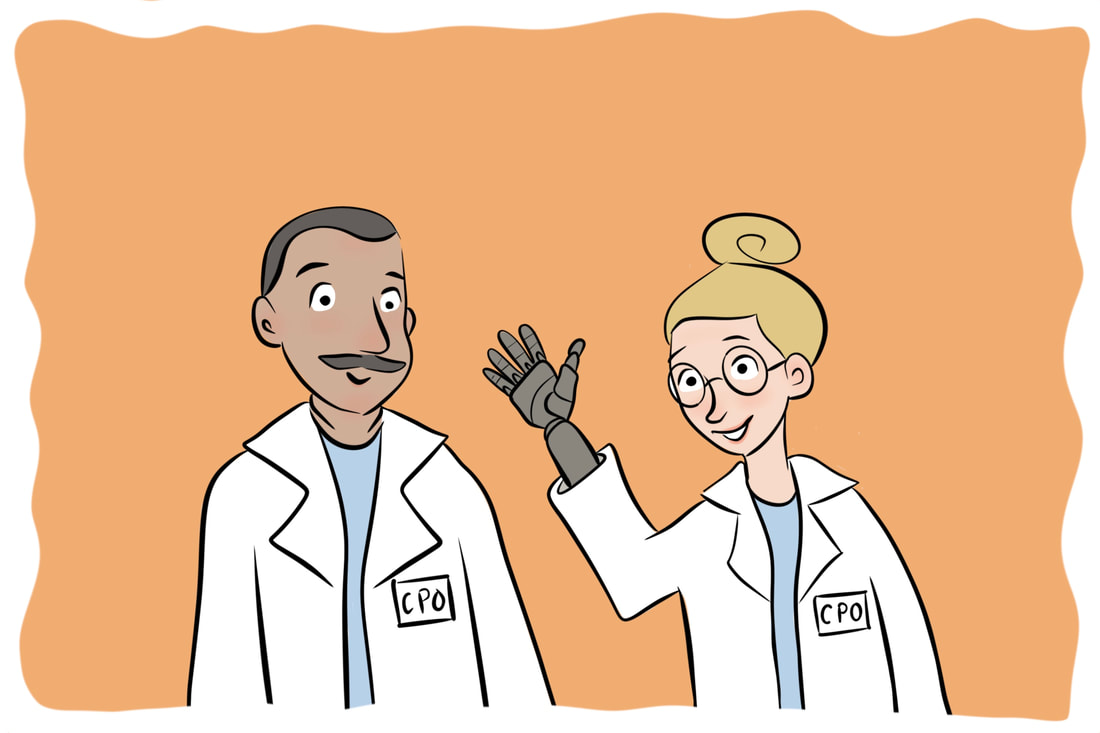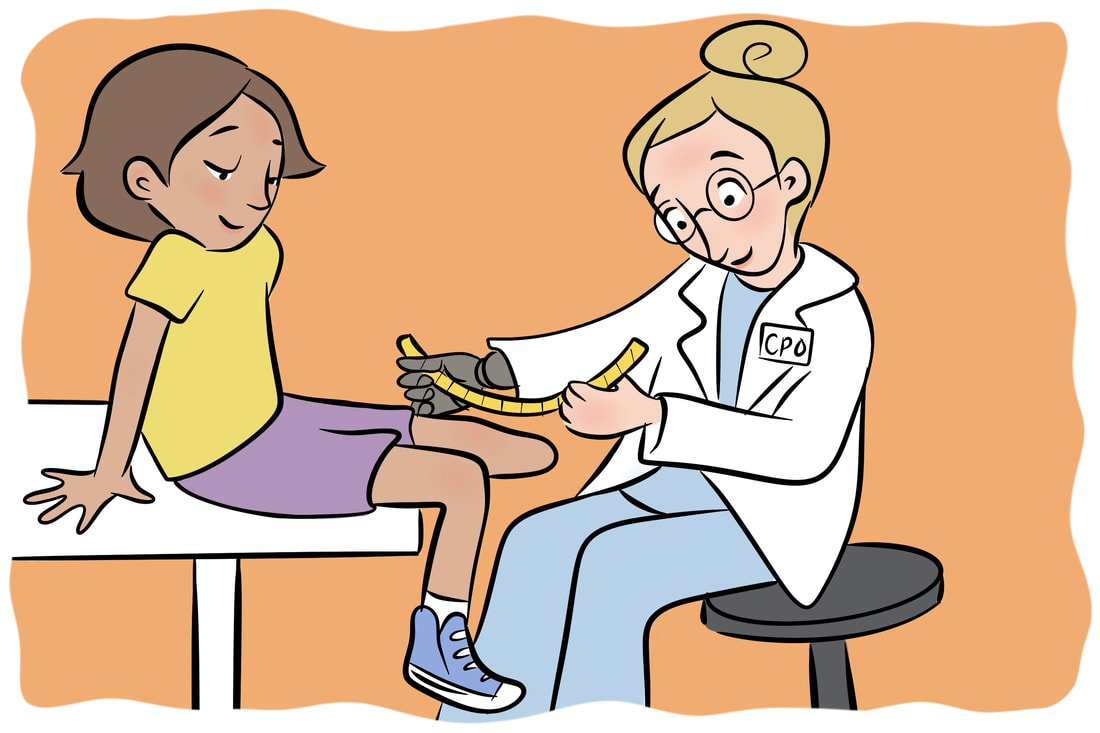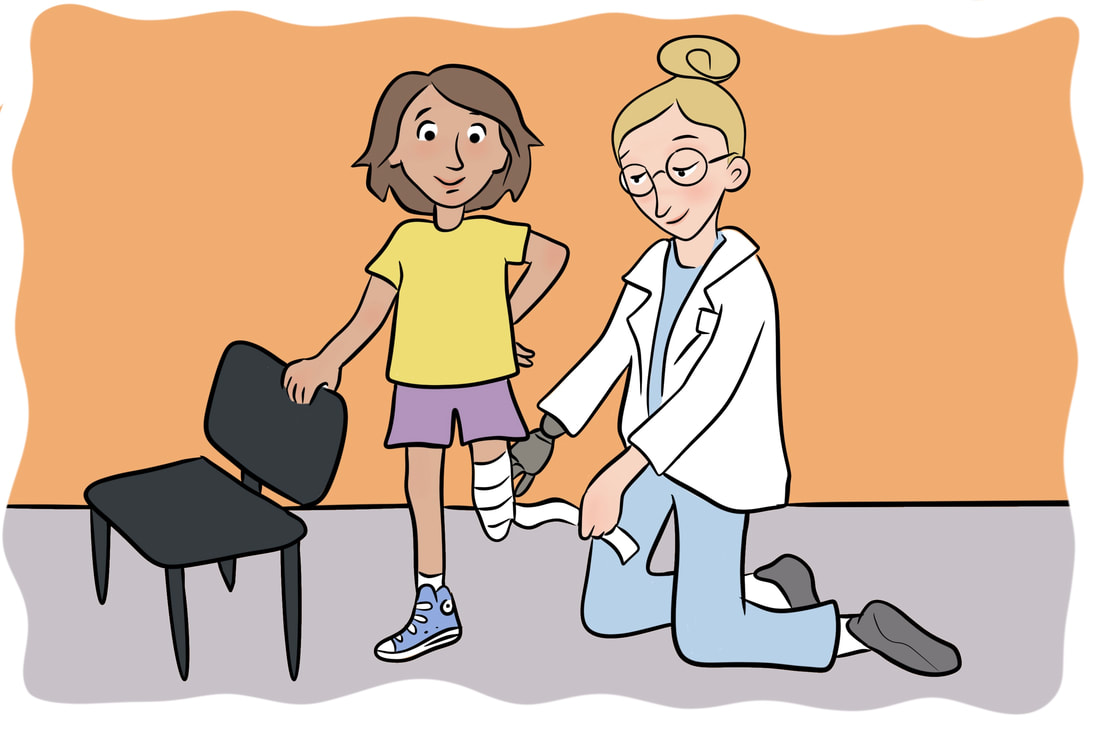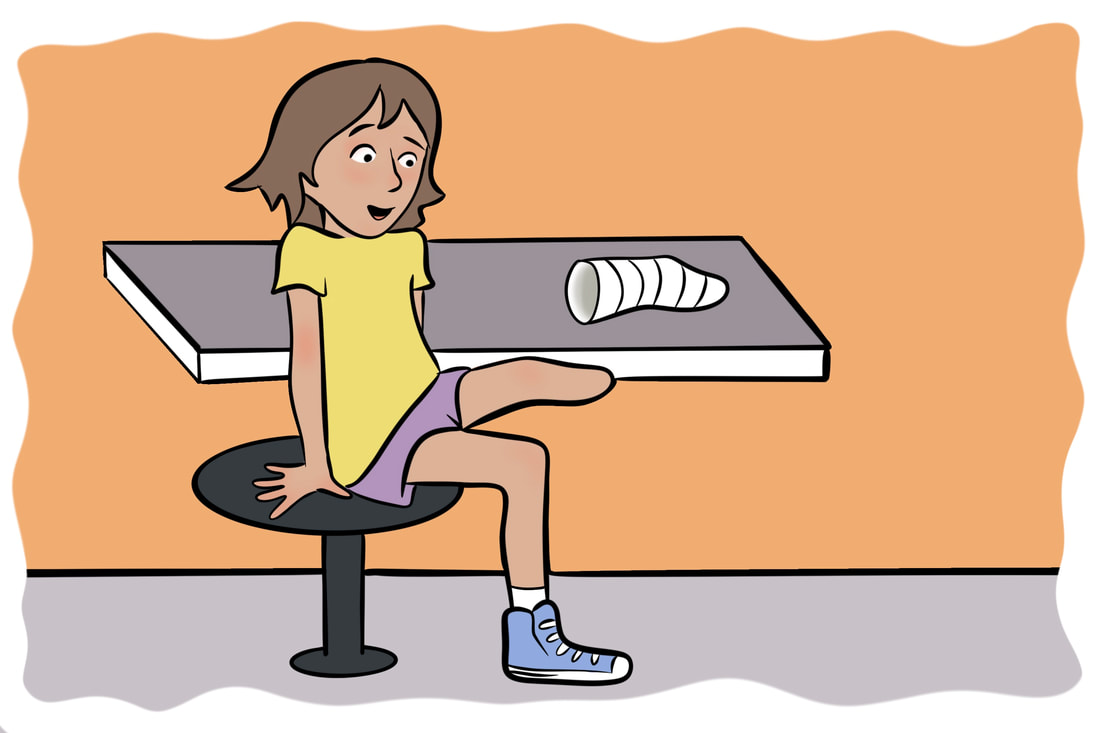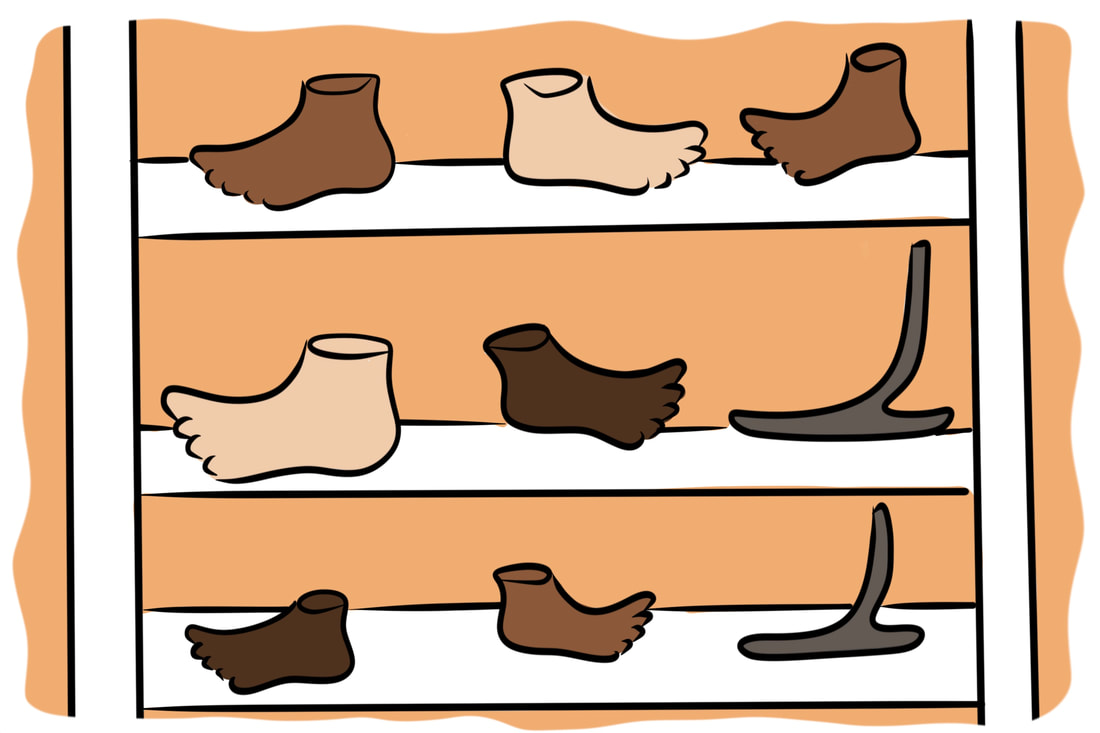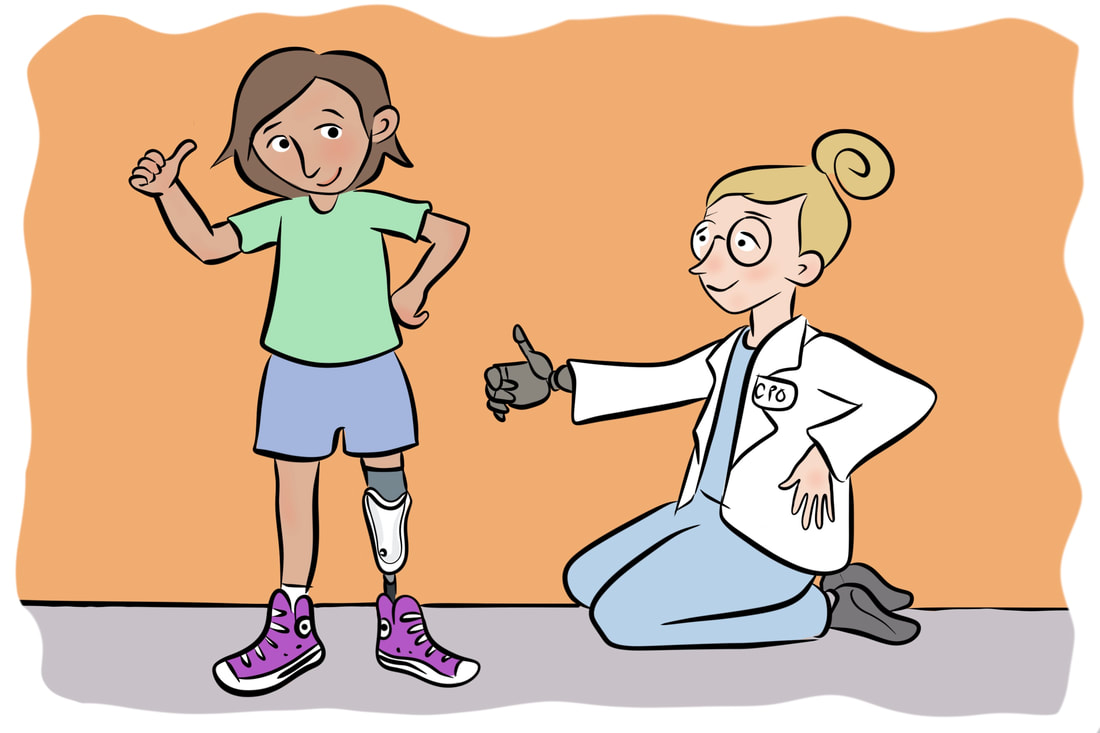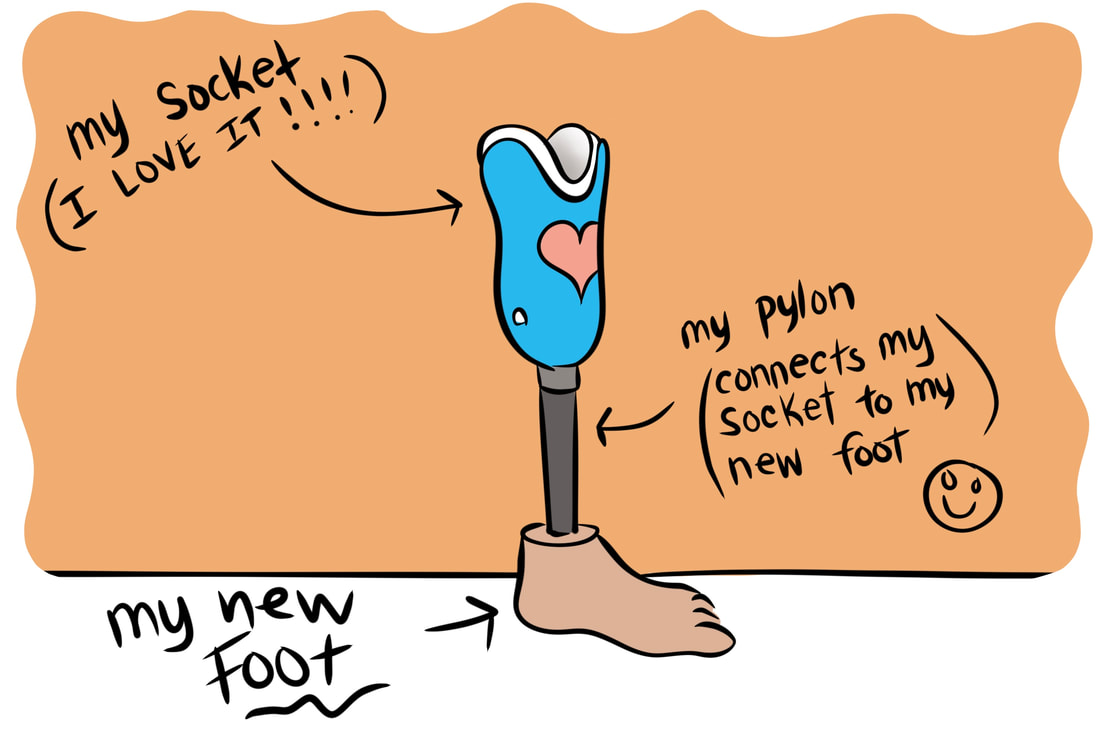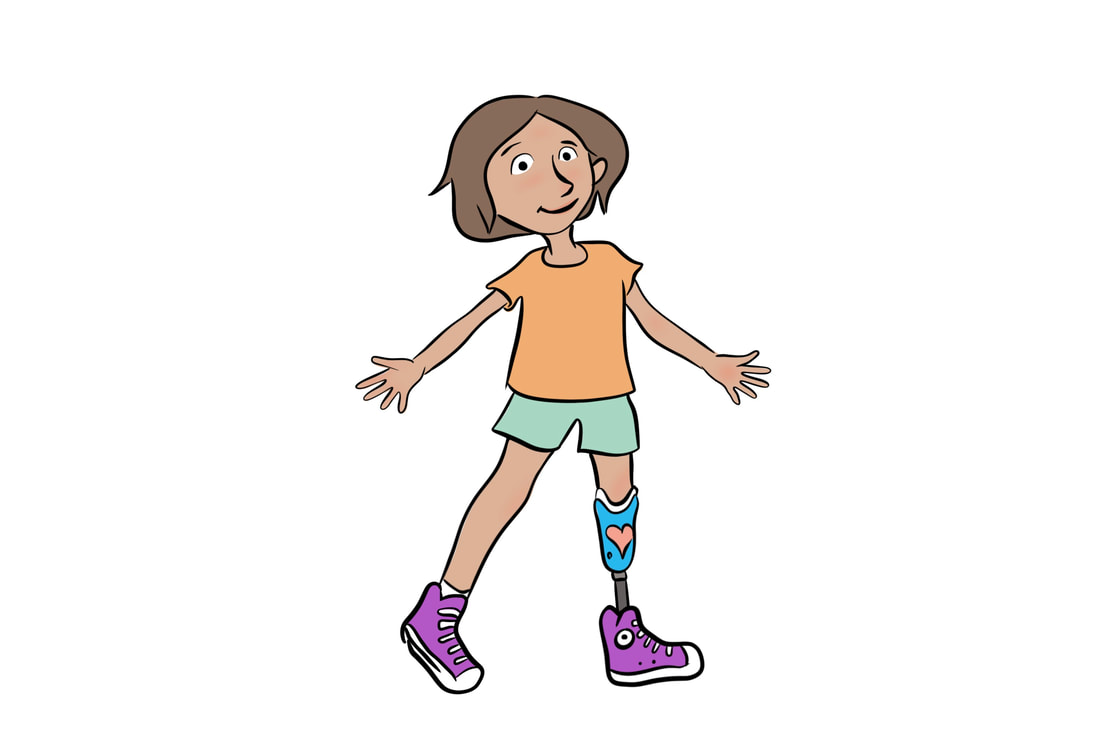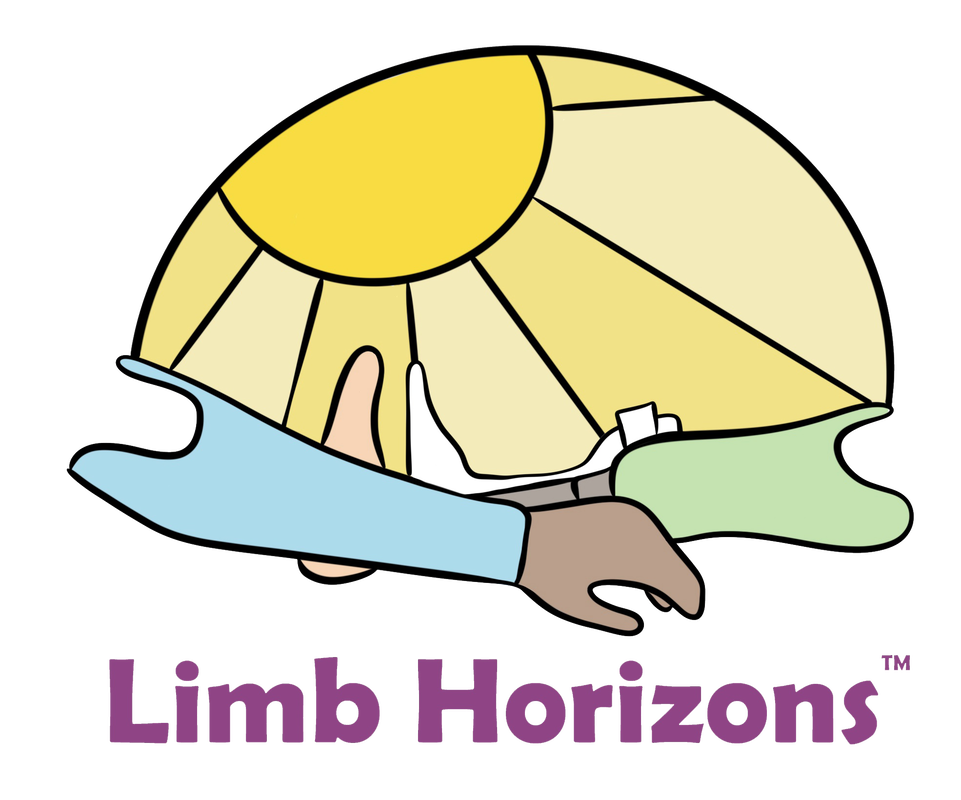Time for a New Prosthesis
|
Hi! Are you new here? I've been here a bunch of times.
Today is super exciting! |
|
Do you want to ask me about my prosthesis? I wear a transtibial prosthesis. A lot of people call it a 'below the knee' prosthesis. My little brother calls it a 'robot leg'. I've been wearing a prosthesis since I was two years old.
|
|
I was born with a special leg.
|
|
A lot of people who come to this clinic use prosthetic legs, like me. Some of those people were born missing parts of their legs. Some people wear prosthetic legs because they had amputations, either in surgeries or in accidents.
|
|
It's time for my appointment. Would you like to meet my prosthetist? Come on!
|
|
Prosthetists are people who design and make prosthetic arms and legs. I like all the prosthetists that work here. They all care about me and work hard to help me to stay active. My prosthetist wears a prosthetic arm.
|
|
I am growing fast and my prosthesis feels too small now. My prosthetist measures my residual limb to see how much I've grown since I received my prosthetic leg. A residual limb, or my little leg, grows just like the rest of me grows. When I grow a lot, I have to get a new prosthesis. I will probably need new shoes too!
|
|
The first step in making a new prosthetic leg is for my prosthetist to cast my residual limb. She wraps wet plaster strips around my residual limb and holds the shape until the cast gets hard.
|
|
I like this part of the visit because I feel like we are making an art project together. The finished cast looks like a sculpture of my residual limb!
|
|
My prosthetist builds my socket around the shape of my residual limb. The socket is the part of my prosthesis that my residual limb fits into. It's important for my socket to fit well. I don't want it to be too tight or too loose. My prosthetist makes sure that it's just right.
|
|
There are many different types of prosthetic feet. Most feet are shaped like real feet and are made out of a type of rubber. There are other feet that are shaped differently. Those feet are called 'blades'. A 'blade' foot can be used during a race because a 'blade' foot helps a person really fast!
|
|
I have to come back on another day to try my test socket on. The test socket is clear, so that my prosthetist can see how my residual limb fits inside of it. This is the time when my prosthetist might make some changes to make sure that I'm happy with how the socket fits. Once we are both happy, she keeps my prosthesis so that she can finish it. I get to pick the color of my new socket!
|
